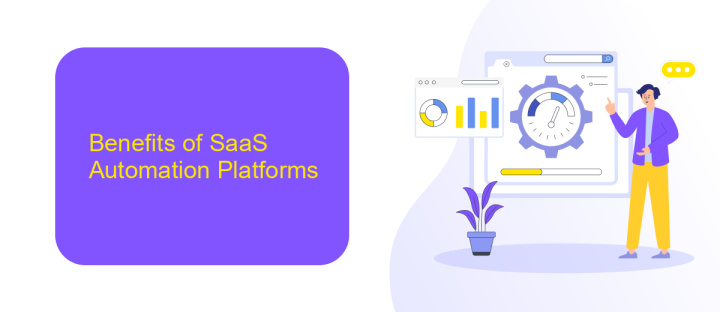SaaS Automation Platform
In today's fast-paced digital landscape, businesses are increasingly turning to Software as a Service (SaaS) automation platforms to streamline operations and enhance productivity. These platforms offer scalable solutions that simplify complex workflows, reduce manual tasks, and improve overall efficiency. By leveraging cutting-edge technology, SaaS automation empowers organizations to focus on their core objectives, driving innovation and growth in an ever-evolving market. Discover how this transformative tool can revolutionize your business processes.
Introduction
In today's rapidly evolving digital landscape, businesses are increasingly turning to Software as a Service (SaaS) automation platforms to streamline operations and enhance productivity. These platforms offer a comprehensive suite of tools designed to automate repetitive tasks, integrate various business applications, and provide insights through data analytics. As organizations strive for efficiency and scalability, the adoption of SaaS automation solutions has become a strategic imperative.
- Automated workflows that reduce manual intervention
- Seamless integration with existing software ecosystems
- Real-time analytics for data-driven decision making
- Scalable solutions that grow with business needs
- Enhanced security and compliance features
By leveraging the capabilities of SaaS automation platforms, businesses can optimize their processes, reduce operational costs, and improve overall performance. These platforms not only facilitate better resource management but also empower teams to focus on strategic initiatives rather than mundane tasks. As a result, companies across various industries are experiencing increased competitiveness and agility in the market.
Benefits of SaaS Automation Platforms

SaaS automation platforms offer a myriad of benefits, streamlining business operations by automating repetitive tasks and enhancing productivity. By reducing manual effort, these platforms allow teams to focus on strategic initiatives rather than mundane activities. This not only boosts efficiency but also minimizes errors, leading to improved accuracy and reliability in operations. Moreover, SaaS solutions are scalable, allowing businesses to adapt quickly to growth without significant investments in infrastructure. The cloud-based nature of these platforms ensures accessibility from anywhere, fostering collaboration among distributed teams.
Another significant advantage is the seamless integration capabilities offered by SaaS automation platforms. Tools like ApiX-Drive simplify the process of connecting various applications, enabling smooth data flow and communication between disparate systems. This integration reduces data silos and enhances decision-making by providing comprehensive insights. Additionally, the cost-effectiveness of SaaS platforms, with their subscription-based models, allows businesses to manage expenses predictably. Regular updates and maintenance by the service providers ensure that companies always have access to the latest features and security enhancements, further solidifying the value of SaaS automation platforms in the modern business landscape.
Key Features of SaaS Automation Platforms

SaaS automation platforms are revolutionizing how businesses operate by streamlining processes and enhancing efficiency. These platforms offer a range of features designed to automate repetitive tasks, integrate seamlessly with other software, and provide valuable insights through data analytics. By leveraging these features, organizations can focus on core business activities, reduce human error, and improve overall productivity.
- Workflow Automation: Automate routine tasks to save time and reduce manual errors.
- Integration Capabilities: Seamlessly connect with other software tools for a unified workflow.
- Data Analytics: Gain insights through real-time data analysis and reporting.
- Scalability: Easily scale operations up or down based on business needs.
- User-Friendly Interface: Simplify user interactions with intuitive design and navigation.
Incorporating these key features, SaaS automation platforms empower businesses to optimize their operations and drive growth. The ability to automate complex processes allows teams to focus on strategic initiatives rather than mundane tasks. With robust integration and analytics capabilities, these platforms provide a comprehensive solution for modern businesses seeking to enhance their competitive edge in an ever-evolving market landscape.
Implementation of SaaS Automation Platforms

Implementing a SaaS automation platform involves strategic planning and a structured approach to ensure seamless integration and optimal performance. The initial phase requires a comprehensive assessment of existing workflows and identification of processes that can benefit from automation. This step is critical to align the platform’s capabilities with business objectives.
Once the assessment is complete, the next phase is selecting a suitable SaaS automation platform that meets the organization’s needs. Considerations include scalability, ease of integration, and support for existing tools. A well-chosen platform can significantly enhance efficiency and reduce operational costs.
- Define clear objectives and key performance indicators (KPIs) for automation.
- Ensure cross-departmental collaboration to identify automation opportunities.
- Conduct a pilot test to evaluate the platform’s effectiveness.
- Provide training and resources for staff to adapt to new automated processes.
After successful implementation, continuous monitoring and optimization are essential. This ensures the platform evolves with changing business needs and technological advancements. Regular feedback from users can provide insights into areas for improvement, ensuring the automation platform remains a valuable asset to the organization.
- Automate the work of an online store or landing
- Empower through integration
- Don't spend money on programmers and integrators
- Save time by automating routine tasks
Future of SaaS Automation Platforms
The future of SaaS automation platforms is poised for significant evolution, driven by the increasing demand for seamless integration and enhanced efficiency. As businesses continue to adopt cloud-based solutions, these platforms will need to offer more sophisticated tools for customization and automation. The focus will shift towards creating more intuitive interfaces that allow users to automate complex workflows without extensive technical expertise. This trend will empower organizations to streamline operations, reduce manual intervention, and ultimately enhance productivity.
Integration capabilities will play a crucial role in the advancement of SaaS automation platforms. Services like ApiX-Drive will become indispensable, offering users the ability to effortlessly connect diverse applications and automate data flow between them. As the ecosystem of digital tools expands, the need for robust integration solutions will grow, enabling businesses to leverage their existing software investments fully. In this context, the ability to quickly adapt and integrate new technologies will be a defining feature of leading SaaS automation platforms, ensuring they remain relevant and competitive in a rapidly changing digital landscape.
FAQ
What is a SaaS Automation Platform?
How does a SaaS Automation Platform work?
What are the benefits of using a SaaS Automation Platform?
Can I integrate multiple applications using a SaaS Automation Platform?
Is it necessary to have technical skills to use a SaaS Automation Platform?
Do you want to achieve your goals in business, career and life faster and better? Do it with ApiX-Drive – a tool that will remove a significant part of the routine from workflows and free up additional time to achieve your goals. Test the capabilities of Apix-Drive for free – see for yourself the effectiveness of the tool.


